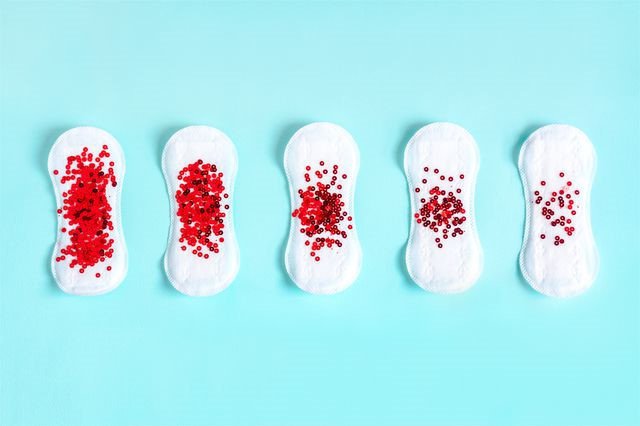How do ovarian follicles form, develop and degenerate?
This is an automatically translated article.
Ovarian follicles are the shells that contain eggs inside, every month a woman usually has an ovulation period, but before ovulation, the follicles will go through a period of growth, thinning, and then disappearing. The egg inside is released.
1. Ovarian follicle
Follicles are the shells that contain the egg inside. During the fetal stage, between 18 and 22 weeks, the ovaries in girls produce about 7 million primary egg cells. However, at birth, the cortical area of the female ovary is left with only 1 million to 2 million primary oocytes, all of which are in the prophase stage of meiosis I. Each primary oocyte is produced surrounded by a layer of squamous epithelial cells, forming primordial cysts.
By puberty, the ovaries have less than 300,000 primary oocytes, and begin to function in a monthly cycle. In each cycle, only one follicle matures and is released, so the entire period of reproductive activity in a woman is limited to a maximum of about 400 follicles. At menopause, there are only approximately 1,000 primary oocytes left in the ovaries.
By puberty, the ovaries have less than 300,000 primary oocytes, and begin to function in a monthly cycle. In each cycle, only one follicle matures and is released, so the entire period of reproductive activity in a woman is limited to a maximum of about 400 follicles. At menopause, there are only approximately 1,000 primary oocytes left in the ovaries.
2. Mature follicle

Giai đoạn phát triển nang trứng
After puberty, the primordial follicles begin to undergo a series of important changes, both in terms of histological structure and hormone-secreting function. The maturation of an ovum takes about 120 days. This is the time when the development from a primordial follicle goes through stages: primary follicle, secondary follicle, cystic follicle, and finally becomes a preovulatory follicle. This phenomenon occurs continuously, meaning that at any time, there are follicles in the ovary at different stages of development.
Initiation of the follicular maturation cycle is the recruitment of a group of primordial follicles. About 10 days before the end of the maturation cycle, most of the initially recruited follicles had already entered the degenerative process. The few remaining follicles that are in the secondary follicular stage enter the menstrual cycle, and compete with each other until only one remains. This follicle develops into a preovulatory or dominant follicle, which then ruptures and releases the secondary oocyte into the fallopian tube, where the remainder of the follicle then differentiates into the corpus luteum.
Unlike spermatogenesis, which lasts indefinitely in men, the maturation of the female follicles ends when the ovarian reserve is depleted, the number of remaining follicles is insufficient to respond to the signals. endocrine signal from the anterior pituitary gland, signaling the onset of menopause.
Initiation of the follicular maturation cycle is the recruitment of a group of primordial follicles. About 10 days before the end of the maturation cycle, most of the initially recruited follicles had already entered the degenerative process. The few remaining follicles that are in the secondary follicular stage enter the menstrual cycle, and compete with each other until only one remains. This follicle develops into a preovulatory or dominant follicle, which then ruptures and releases the secondary oocyte into the fallopian tube, where the remainder of the follicle then differentiates into the corpus luteum.
Unlike spermatogenesis, which lasts indefinitely in men, the maturation of the female follicles ends when the ovarian reserve is depleted, the number of remaining follicles is insufficient to respond to the signals. endocrine signal from the anterior pituitary gland, signaling the onset of menopause.
3. Follicular degeneration

Một số ít các nang sẽ trưởng thành, trải qua sự rụng trứng, và đi vào chu kỳ kinh nguyệt mỗi tháng
The female follicles have two different fates: most of the follicles will degenerate during recruitment; A small number of follicles will mature, undergo ovulation, and enter the menstrual cycle each month.
Degeneration is a regular ovarian process in which immature follicles are destroyed under the control of paracrine and endocrine substances. Apoptotic apoptosis of granulocytes is considered to be the fundamental mechanism in follicular degeneration, involving the action of five different signaling systems, including TNF (tumor necrosis factor alpha), Fas ligand , TRAIL (TNF-related apoptosis-inducing ligand), APO-3 ligand, PFG-5 ligand. In contrast, the hormone FSH from the pituitary gland inhibits this phenomenon.
Thus, apoptosis during periodic follicular recruitment at reproductive age helps explain why each ovary possesses up to 300,000 primordial follicles at post-pubertal time, but at menopause. Only about 1,000 follicles remain in the ovarian reserve.
Degeneration is a regular ovarian process in which immature follicles are destroyed under the control of paracrine and endocrine substances. Apoptotic apoptosis of granulocytes is considered to be the fundamental mechanism in follicular degeneration, involving the action of five different signaling systems, including TNF (tumor necrosis factor alpha), Fas ligand , TRAIL (TNF-related apoptosis-inducing ligand), APO-3 ligand, PFG-5 ligand. In contrast, the hormone FSH from the pituitary gland inhibits this phenomenon.
Thus, apoptosis during periodic follicular recruitment at reproductive age helps explain why each ovary possesses up to 300,000 primordial follicles at post-pubertal time, but at menopause. Only about 1,000 follicles remain in the ovarian reserve.
Please dial HOTLINE for more information or register for an appointment HERE. Download MyVinmec app to make appointments faster and to manage your bookings easily.
This article is written for readers from Sài Gòn, Hà Nội, Hồ Chí Minh, Phú Quốc, Nha Trang, Hạ Long, Hải Phòng, Đà Nẵng.





